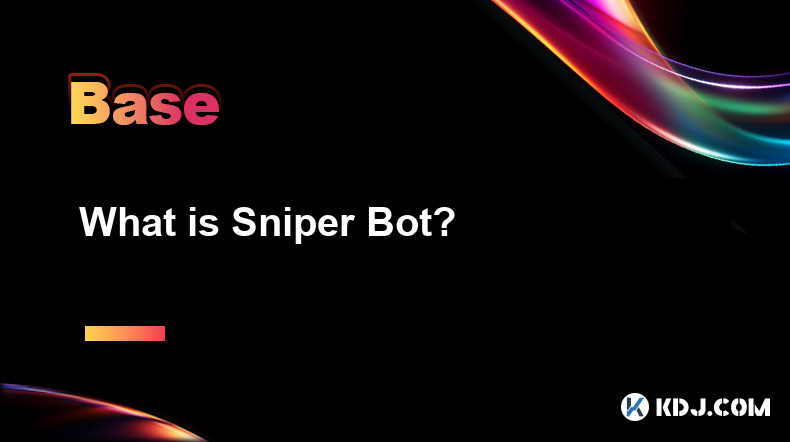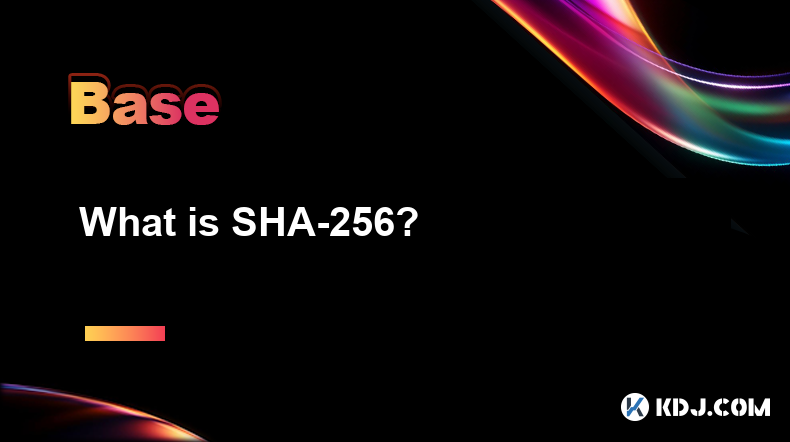-
 Bitcoin
Bitcoin $78,719.1829
-3.27% -
 Ethereum
Ethereum $1,555.6393
-8.17% -
 Tether USDt
Tether USDt $0.9995
-0.01% -
 XRP
XRP $1.9005
-7.17% -
 BNB
BNB $553.9917
-2.70% -
 USDC
USDC $1.0000
0.01% -
 Solana
Solana $106.4945
-5.56% -
 Dogecoin
Dogecoin $0.1481
-6.60% -
 TRON
TRON $0.2277
-4.32% -
 Cardano
Cardano $0.5771
-6.44% -
 UNUS SED LEO
UNUS SED LEO $8.9243
-0.54% -
 Toncoin
Toncoin $3.0300
-7.27% -
 Chainlink
Chainlink $11.3912
-4.90% -
 Stellar
Stellar $0.2317
-6.96% -
 Avalanche
Avalanche $16.8853
-0.30% -
 Shiba Inu
Shiba Inu $0.0...01137
-2.71% -
 Sui
Sui $2.0234
-0.48% -
 Hedera
Hedera $0.1485
-1.39% -
 MANTRA
MANTRA $6.2788
2.86% -
 Polkadot
Polkadot $3.6133
-5.33% -
 Bitcoin Cash
Bitcoin Cash $275.5372
-5.26% -
 Dai
Dai $1.0000
0.01% -
 Litecoin
Litecoin $71.0772
-7.05% -
 Ethena USDe
Ethena USDe $0.9985
-0.03% -
 Bitget Token
Bitget Token $4.0789
-4.48% -
 Pi
Pi $0.5848
-4.08% -
 Monero
Monero $200.0280
-1.59% -
 Hyperliquid
Hyperliquid $11.1085
1.36% -
 Uniswap
Uniswap $5.1037
-6.12% -
 OKB
OKB $51.2860
-0.94%
What is Whale and Its Market Impact?
Whales, holding large crypto amounts, can sway markets; their trades may cause price swings, impacting liquidity and sentiment.
Apr 07, 2025 at 09:36 pm

In the cryptocurrency world, the term "whale" refers to individuals or entities that hold a significant amount of a particular cryptocurrency. These large holders can influence the market due to their substantial holdings, which can lead to significant price movements when they buy or sell. Understanding the role of whales and their market impact is crucial for any crypto investor or trader.
Definition of a Whale
A whale in the cryptocurrency market is typically defined as an individual or entity that holds a large amount of a specific cryptocurrency. The exact threshold for what constitutes a whale can vary depending on the cryptocurrency in question. For example, in Bitcoin, a whale might be someone who holds thousands of BTC, while in smaller altcoins, the threshold might be lower. Whales have the power to move markets due to their large holdings, and their actions can significantly impact the price and liquidity of a cryptocurrency.
How Whales Influence the Market
Whales can influence the market in several ways. When a whale decides to buy or sell a large amount of cryptocurrency, it can lead to significant price movements. For instance, if a whale sells a large amount of Bitcoin, it can cause the price to drop due to the increased supply on the market. Conversely, if a whale buys a large amount, it can drive the price up due to increased demand.
- Market Manipulation: Whales can engage in market manipulation tactics such as pump and dump schemes, where they artificially inflate the price of a cryptocurrency by buying large amounts and then selling once the price has risen, causing it to crash.
- Liquidity Impact: Whales can also affect the liquidity of a cryptocurrency. If a whale holds a significant portion of a cryptocurrency's total supply, it can make it difficult for smaller investors to buy or sell without significantly impacting the price.
- Sentiment Influence: The actions of whales can also influence market sentiment. If a well-known whale is seen buying or selling, it can lead other investors to follow suit, further amplifying the price movement.
Identifying Whales
Identifying whales can be challenging, but there are several methods that investors use to track their activities. One common method is to monitor large transactions on the blockchain. Blockchain explorers like Blockchain.com or Etherscan allow users to see large transactions, which can indicate whale activity.
- On-chain Analysis: Tools like Glassnode or CryptoQuant provide on-chain data that can help identify whale movements. These platforms offer insights into large transactions, wallet balances, and other metrics that can signal whale activity.
- Social Media and News: Following crypto influencers and news outlets can also help identify whale movements. Whales often share their views and actions on social media platforms like Twitter or through interviews with crypto news outlets.
- Exchange Data: Some exchanges provide data on large trades, which can help identify whale activity. For example, platforms like Binance or Coinbase might show large buy or sell orders that could indicate whale movements.
Case Studies of Whale Impact
There have been several notable instances where whale activity has significantly impacted the cryptocurrency market. One famous example is the Mt. Gox incident, where a large amount of Bitcoin was sold off, causing a significant price drop. Another example is the Bitcoin whale who moved $1 billion worth of BTC in a single transaction, which led to speculation and market volatility.
- Mt. Gox Incident: In 2014, the collapse of the Mt. Gox exchange led to the sale of a large amount of Bitcoin, causing the price to plummet. This event highlighted the impact that whales can have on the market.
- Bitcoin Whale Transaction: In 2020, a whale moved $1 billion worth of Bitcoin in a single transaction, leading to speculation and increased market volatility. This event showed how even a single whale's action can impact the market.
Strategies to Mitigate Whale Impact
While it's impossible to completely eliminate the impact of whales, there are strategies that investors can use to mitigate their influence. One approach is to diversify your portfolio across different cryptocurrencies to reduce the risk of being heavily impacted by a single whale's actions.
- Diversification: By holding a variety of cryptocurrencies, you can spread the risk and reduce the impact of any single whale's actions on your portfolio.
- Stop-Loss Orders: Using stop-loss orders can help limit losses if a whale's actions cause a significant price drop. A stop-loss order automatically sells your cryptocurrency if it reaches a certain price, helping to protect your investment.
- Long-Term Holding: Adopting a long-term investment strategy can also help mitigate the impact of whales. By holding onto your cryptocurrencies for the long term, you can ride out short-term volatility caused by whale activity.
Frequently Asked Questions
Q: Can small investors become whales?
A: Yes, small investors can become whales by accumulating a significant amount of a cryptocurrency over time. However, becoming a whale requires substantial investment and patience, as it involves holding a large portion of a cryptocurrency's total supply.
Q: Are all whale activities harmful to the market?
A: Not all whale activities are harmful. Some whales may hold their cryptocurrencies for the long term, contributing to the stability of the market. However, when whales engage in market manipulation or sudden large transactions, it can lead to volatility and harm smaller investors.
Q: How can I protect my investments from whale activity?
A: To protect your investments from whale activity, consider diversifying your portfolio, using stop-loss orders, and adopting a long-term investment strategy. These strategies can help mitigate the impact of whale actions on your investments.
Q: Can regulatory measures help control whale activity?
A: Regulatory measures can help control whale activity to some extent. For example, regulations that require large transactions to be reported can increase transparency and reduce the potential for market manipulation. However, enforcing such regulations in the decentralized world of cryptocurrencies can be challenging.
Disclaimer:info@kdj.com
The information provided is not trading advice. kdj.com does not assume any responsibility for any investments made based on the information provided in this article. Cryptocurrencies are highly volatile and it is highly recommended that you invest with caution after thorough research!
If you believe that the content used on this website infringes your copyright, please contact us immediately (info@kdj.com) and we will delete it promptly.
- As clouds gathered over the crypto landscape, a flash tore through the sky: Ethereum, an essential pillar, lost 14% of its value in 24 hours
- 2025-04-08 01:15:11
- The scandal related to ZKasino, a blockchain-based gambling platform, continues to widen
- 2025-04-08 01:15:11
- As We Approach May 2025, Dogecoin (DOGE) Investors Are Facing Uncertainty
- 2025-04-08 01:10:12
- Cryptocurrency markets plunged sharply early Monday, wiping billions from the total market capitalization
- 2025-04-08 01:10:12
- Dogecoin (DOGE) Price Surge Incoming? Analysts Point to Historical Patterns
- 2025-04-08 01:05:12
- Mutuum Finance (MUTM) Token Identified by Algorithms to Deliver Exponential Upside Before 2025
- 2025-04-08 01:05:12
Related knowledge

What is Sniper Bot?
Apr 07,2025 at 10:43pm
A Sniper Bot is a type of automated trading software used within the cryptocurrency market to execute trades at optimal times, often milliseconds before other traders. These bots are designed to take advantage of new token listings, price fluctuations, and other market opportunities to buy or sell assets quickly and efficiently. The primary goal of a Sn...

What is Mining Rig?
Apr 07,2025 at 11:08pm
A mining rig is a specialized computer system designed specifically for the purpose of mining cryptocurrencies. Mining, in the context of cryptocurrencies, refers to the process of solving complex mathematical problems to validate transactions and add them to the blockchain. This process requires significant computational power, and a mining rig is buil...

What is X11?
Apr 07,2025 at 09:22pm
What is X11? X11 is a cryptographic hash function used in various cryptocurrencies, most notably in the Dash cryptocurrency. It is designed to provide a high level of security and efficiency, making it a popular choice for blockchain networks. The X11 algorithm is unique because it uses a chain of 11 different hashing algorithms, which enhances its secu...

What is SHA-256?
Apr 07,2025 at 11:15pm
What is SHA-256?SHA-256, or Secure Hash Algorithm 256-bit, is a cryptographic hash function that is part of the SHA-2 family of hash functions. It is widely used in the cryptocurrency world, particularly in Bitcoin and other blockchain technologies, for securing data and ensuring the integrity of transactions. This article will delve into the specifics ...

What is an elliptic curve?
Apr 08,2025 at 01:21am
An elliptic curve is a fundamental concept in mathematics that has found significant applications in the field of cryptography, particularly within the cryptocurrency sector. In the context of cryptocurrencies, elliptic curves are used to create secure cryptographic systems that underpin the security of transactions and the generation of digital signatu...

What is WASM compatibility?
Apr 07,2025 at 09:08pm
What is WASM Compatibility? WASM, or WebAssembly, is a binary instruction format for a stack-based virtual machine. It is designed to be a portable compilation target for programming languages, enabling deployment on the web for client and server applications. In the context of cryptocurrencies and blockchain technology, WASM compatibility refers to the...

What is Sniper Bot?
Apr 07,2025 at 10:43pm
A Sniper Bot is a type of automated trading software used within the cryptocurrency market to execute trades at optimal times, often milliseconds before other traders. These bots are designed to take advantage of new token listings, price fluctuations, and other market opportunities to buy or sell assets quickly and efficiently. The primary goal of a Sn...

What is Mining Rig?
Apr 07,2025 at 11:08pm
A mining rig is a specialized computer system designed specifically for the purpose of mining cryptocurrencies. Mining, in the context of cryptocurrencies, refers to the process of solving complex mathematical problems to validate transactions and add them to the blockchain. This process requires significant computational power, and a mining rig is buil...

What is X11?
Apr 07,2025 at 09:22pm
What is X11? X11 is a cryptographic hash function used in various cryptocurrencies, most notably in the Dash cryptocurrency. It is designed to provide a high level of security and efficiency, making it a popular choice for blockchain networks. The X11 algorithm is unique because it uses a chain of 11 different hashing algorithms, which enhances its secu...

What is SHA-256?
Apr 07,2025 at 11:15pm
What is SHA-256?SHA-256, or Secure Hash Algorithm 256-bit, is a cryptographic hash function that is part of the SHA-2 family of hash functions. It is widely used in the cryptocurrency world, particularly in Bitcoin and other blockchain technologies, for securing data and ensuring the integrity of transactions. This article will delve into the specifics ...

What is an elliptic curve?
Apr 08,2025 at 01:21am
An elliptic curve is a fundamental concept in mathematics that has found significant applications in the field of cryptography, particularly within the cryptocurrency sector. In the context of cryptocurrencies, elliptic curves are used to create secure cryptographic systems that underpin the security of transactions and the generation of digital signatu...

What is WASM compatibility?
Apr 07,2025 at 09:08pm
What is WASM Compatibility? WASM, or WebAssembly, is a binary instruction format for a stack-based virtual machine. It is designed to be a portable compilation target for programming languages, enabling deployment on the web for client and server applications. In the context of cryptocurrencies and blockchain technology, WASM compatibility refers to the...
See all articles





















































































